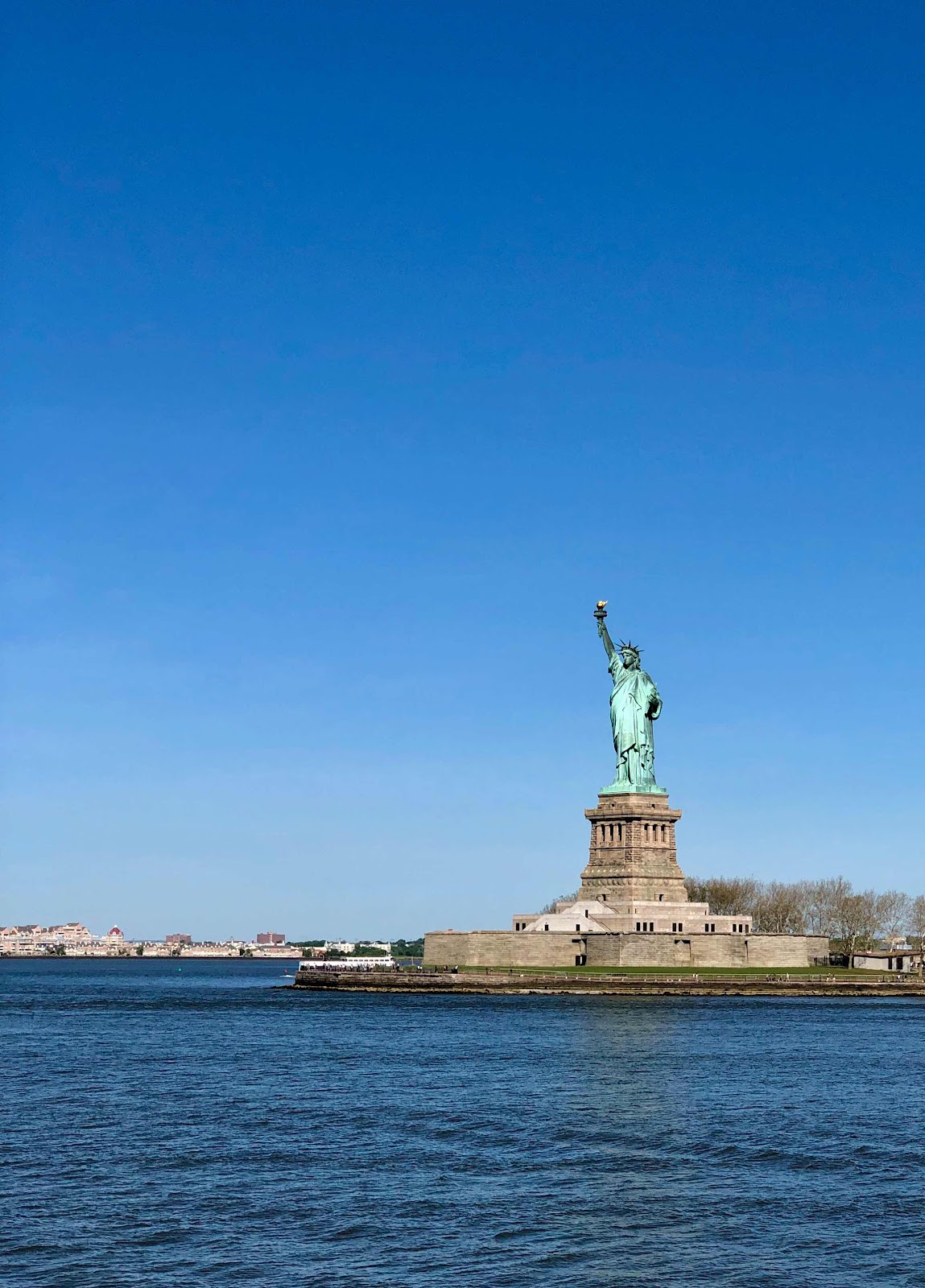A visit to Ellis Island
I don’t know if any of my relatives came through Ellis Island. The ones I know about came in 1848 from Germany —my great, great grandmother and her five sons, way before Ellis Island had been established as a through-point for immigrants on the East Coast in the late 1800’s, shortly after the Statue of Liberty (on the adjacent island) was constructed, a gift of the French people via their government, to commemorate our 100 years as a nation. (Construction was started in 1875, finished in 1886).

Remarkable, as was my visit to the Ellis Island Museum today. What a evocative and significant place — the museum pays tribute to the many, many immigrants who passed through to new lives in this country largely in the period between 1880-1920, a peak immigration period, when our nation needed people to work in factories, construct railways, dig tunnels, build infrastructure, cook meals, take care of children, etc.


Remarkable, as was my visit to the Ellis Island Museum today. What a evocative and significant place — the museum pays tribute to the many, many immigrants who passed through to new lives in this country largely in the period between 1880-1920, a peak immigration period, when our nation needed people to work in factories, construct railways, dig tunnels, build infrastructure, cook meals, take care of children, etc.
At one point, our northeastern cities were largely made up of immigrants. Most had come seeking new lives, driven by economic downturns in Europe, population pressures in small rural villages — folks seeking new lives of opportunity and freedom, too.
And the journey was hard. Steamship lines advertised their trips, setting up organizing immigration camps in places like Hamburg, where would-be immigrants were screened for cleanliness (sanitized and de-loused as needed), and then sold 3rd class tickets in steerage below deck, where the conditions were modest as best. Depending on the boat (listening to the audio accounts), the conditions could be quite dreadful.
Arriving in Ellis Island, ship manifests were used to call would-be immigrants for screening in the register hall: largely for medical screening (being healthy and not suffering from any sort of illness seemed to be the major screen), along with checking that they had enough money (about $25 at the time) —the equivalent of saving up for a couple of years for most in Europe. This would be sufficient to buy train tickets to their final destination, along with buying hot meals and travel food at the Ellis Island canteens.
Most had little with them, if much more than a set of clothes and a small bag. That was it. The lucky ones had family meeting them or family or friends at another destination.
Only ~ 2% of immigrants were sent back, largely because of medical reasons — a eye disease that I’d never heard of was a main one, as was TB, or other infirmities that might prevent an immigrant from working.
It was remarkable, too, that most of the visitors to Ellis Island today on this Memorial Day holiday were foreign tourists — I heard so many languages, some familiar, many not — and to our credit, the excellent free audio guide to the museum, which is run by the National Park Service, is available in at least 15 langugages, maybe more — I just said English, please.
Retreating this evening to my HomeExchange apartment, up on the rooftop terrace, I also heard a variety of languages. We’re a nation of immigrants, after all.

Though I grew up in NY, I never have been to Ellis Island. My paternal grandparents definitely came through Ellis Island around 1910 - my maternal grandparents, I'm not so sure. I remember my grandmother telling a story about arriving in NY as a little girl, and that her uncle met them once they were released. He had a gift for her - a banana, which she had never eaten or even seen at that point in her life. And she would always tell us that ever since bananas were her favorite fruit.
ReplyDeleteIt’s definitely worth visiting now — the museum is excellent. And many of the newly arriving immigrants remember the fruits that they were given (from the excellent audio guide) — bananas, apples, and oranges - just like your grandmother.
ReplyDelete